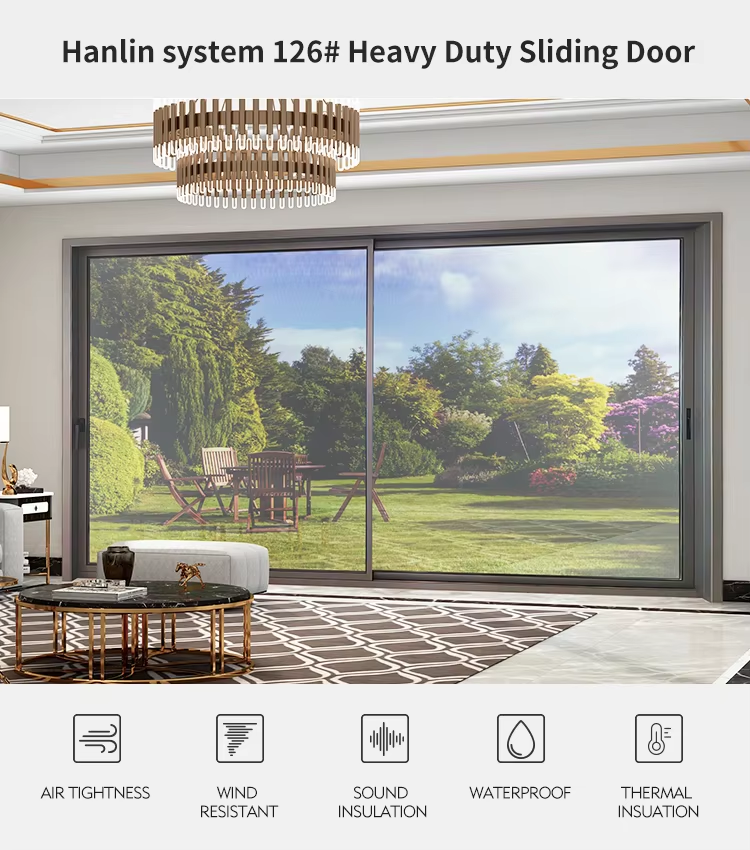

In the vast world of interior design, the art of seamlessly and attractively integrating sliding doors with other furniture is a key factor in transforming a space into a functional and visually enchanting haven. The right combination not only enhances the overall aesthetic but also optimizes the utilization of space, creating a harmonious and inviting atmosphere.
Style Alignment
The style of the sliding doors should be in perfect harmony with the overarching theme of the interior. In a contemporary setting, sliding doors with clean, uncluttered lines and neutral tones, such as sleek glass panels or matte finishes, are ideal. They complement minimalist furniture like a streamlined sofa with sharp edges and a low-profile coffee table, giving off an air of modern simplicity and sophistication.
Conversely, in a traditional interior, sliding doors featuring ornate carvings, detailed moldings, or rich wood finishes would be more appropriate. These would pair well with classic furniture pieces like an intricately designed antique bed or a heavy, carved dresser, evoking a sense of timeless elegance and charm.
Functional Considerations
Functionality plays a crucial role in determining how sliding doors and other furniture interact. In a bedroom, for instance, a sliding closet door that aligns with the height and width of the bed and other storage furniture ensures a balanced and aesthetically pleasing look while facilitating easy access.
In a living room, a sliding partition door can effectively separate different functional areas, such as the seating area from the dining area. It should be coordinated with the placement and style of the sofa, chairs, and entertainment units to ensure smooth movement and unobstructed use of the space.
Color Coordination
Color is a powerful tool in creating a cohesive and visually appealing interior. Sliding doors should be selected in colors that either blend seamlessly with the existing color scheme or provide a complementary contrast. In a predominantly monochromatic room with mostly white furniture, a bold-colored sliding door like deep navy blue or emerald green can add a striking pop of contrast and personality.
Alternatively, in a space with multiple colors, a sliding door in a shade that echoes one of the dominant colors can help tie the various elements together, creating a sense of unity and coherence.
Proportion and Scale
Maintaining the right proportion and scale is essential for achieving a harmonious composition. In a small room, narrow and tall sliding doors can visually elongate the space and prevent it from feeling cramped. The furniture chosen should also be proportionate, with smaller, sleeker pieces selected to create an illusion of openness and airiness.
In larger rooms, wider sliding doors and larger, more substantial furniture can make the space appear more imposing and grand. It’s important to strike the right balance to avoid either overwhelming or underwhelming the space.
Material Consistency or Contrast
The choice of materials for the sliding doors can have a significant impact on the overall look and feel of the space. If the room is furnished with mostly leather and wood furniture, wooden sliding doors can provide a consistent and unified look.
However, introducing a metal-framed glass sliding door or one with fabric inserts can add an element of surprise and contrast, breaking the monotony and adding depth and texture to the design.
Light and Space
Lighting is another important aspect that influences the selection and placement of sliding doors. In well-lit areas with abundant natural light, transparent or semi-transparent sliding doors can enhance the sense of openness and connection with the outside world.
In darker or more enclosed spaces, light-reflecting surfaces or lighter-colored doors can help bounce light around and brighten the environment. The way the sliding doors interact with the light sources should enhance the overall ambiance and functionality of the space.
Conclusion
The successful integration of sliding doors with other furniture in interior design is a complex yet highly rewarding endeavor. It requires meticulous attention to various elements such as style, function, color, proportion, material, and light. By achieving this delicate balance and harmony, one can create a living space that is not only aesthetically pleasing but also highly functional and comfortable. Thoughtful and strategic design choices in this regard can truly transform a house into a warm and inviting home, reflecting the personality and lifestyle of its occupants.https://api.whatsapp.com/send/?phone=8618942425133




